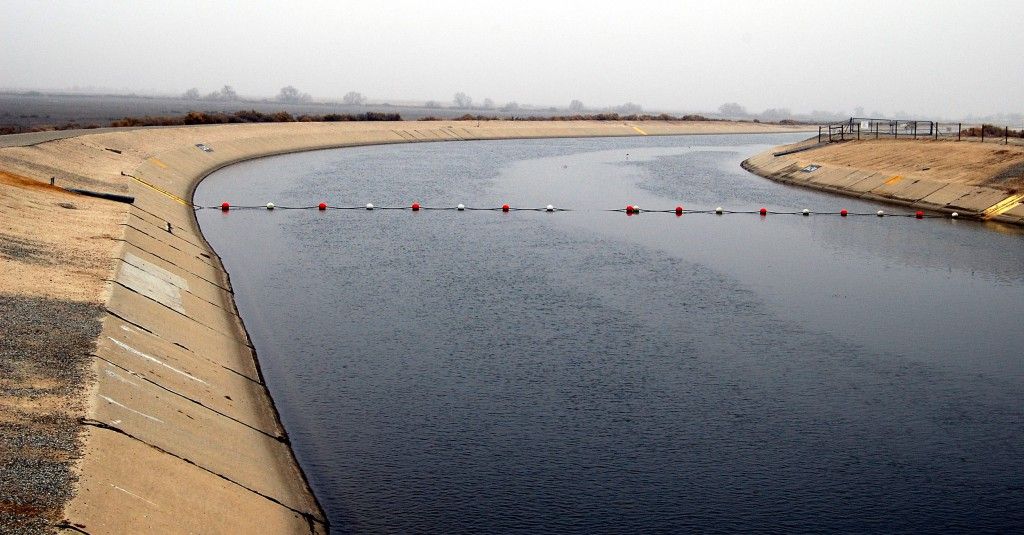CA drought: Officials ease rules again
 Nearly a year ago, when Gov. Jerry Brown announced a mandatory 25 percent reduction in state water use, it looked like Californians were in for a long era of constant conservation demands, even with anticipation of winter El Nino storms. Brown’s plan mandating the cuts wasn’t one-size-fits-all — based on usage patterns, some districts could reduce water use as little as 12 percent and some would face mandated 36 percent reductions. But it was still one of the toughest edicts on water in Golden State history.
Nearly a year ago, when Gov. Jerry Brown announced a mandatory 25 percent reduction in state water use, it looked like Californians were in for a long era of constant conservation demands, even with anticipation of winter El Nino storms. Brown’s plan mandating the cuts wasn’t one-size-fits-all — based on usage patterns, some districts could reduce water use as little as 12 percent and some would face mandated 36 percent reductions. But it was still one of the toughest edicts on water in Golden State history.
Since then, it’s come to appear that the Brown administration’s rhetoric is tougher than its actual policies. Late last week, state regulators announced that they were considering significantly relaxing the rules for some water districts.
The proposed changes to California’s emergency drought regulation reward water districts for investing in new local supplies and allow for adjustments to savings goals based on a district’s climate and population growth.
Friday’s proposal also allows water providers to reduce their “conservation standards” by as much as 8 percentage points.
That’s from The Los Angeles Times’ coverage. It comes on top of a previous plan announced a month ago that allowed some water districts to get credits of 4 percentage points for their positive actions; it also gave districts credits of up to 7 percent for adding new supplies, a big plus for districts like the San Diego County Water Authority, which finished building the Northern Hemisphere’s biggest desalination plant last year, a $1 billion project on the Carlsbad coast.
“Godzilla El Nino” may be coming to pass
The two rounds of changes easing up reductions might solely be seen as about fairness to better-run districts that diversified supplies and promoted conservation before it became mandatory. But there’s a chance they also reflect increasing confidence that the El Nino storms that began in recent weeks are just a harbinger of what a NASA climatologist suggested in August could be a “Godzilla El Nino.” Previous fears that Northern California wouldn’t benefit from storms nearly as much as Southern California appear to be easing. This is from Friday’s San Jose Mercury-News:
El Niño conditions may have peaked in the Pacific Ocean, federal scientists said Thursday, but powerful weather systems — like a new series of storms on track to soak the greater Bay Area over the next five days — have only just begun and will likely continue at least through May.
“This is the time of year when El Niño acts the most reliably,” said Mike Halpert, deputy director of the climate prediction center for the National Oceanic and Atmospheric Administration in College Park, Maryland. “So we would certainly expect the impacts to continue well through the rest of the winter and into the early part of the spring.”
There is a 96 percent chance that El Niño conditions will remain through March, scientists at NOAA and Columbia University reported Thursday, and a 62 percent probability they will continue through May.
Simply put, that means the likelihood of regular storms across California and heavy snow in the Sierra Nevada will continue to be greater this year than in regular years, offering hope that 2016 may finally be the year that the state’s four-year drought — now starting its fifth year — is broken.
‘Exceptional’ drought conditions over in Northern California
The U.S. Drought Monitor website, run by scientists at the University of Nebraska, said Northern California had received enough rain that it no longer qualified as being in an “exceptional” drought condition. But the website’s Jan. 14 report also had words of caution:
In California, even with the rain and snow received over the last several weeks, many areas are still running below normal for precipitation and snow for the current water year. Wells, reservoirs, ground water, and soil moisture are all recovering slowly, which is to be expected after three-plus years of drought. Precipitation in northern California eased some of the exceptional drought. The consensus from California experts is that recovery will be slow, and many more storm events are needed through the rest of winter to really put a dent in the drought.
Chris Reed
Chris Reed is a regular contributor to Cal Watchdog. Reed is an editorial writer for U-T San Diego. Before joining the U-T in July 2005, he was the opinion-page columns editor and wrote the featured weekly Unspin column for The Orange County Register. Reed was on the national board of the Association of Opinion Page Editors from 2003-2005. From 2000 to 2005, Reed made more than 100 appearances as a featured news analyst on Los Angeles-area National Public Radio affiliate KPCC-FM. From 1990 to 1998, Reed was an editor, metro columnist and film critic at the Inland Valley Daily Bulletin in Ontario. Reed has a political science degree from the University of Hawaii (Hilo campus), where he edited the student newspaper, the Vulcan News, his senior year. He is on Twitter: @chrisreed99.
Related Articles
Debate: Brown offers up whopper, claims he’s stopped pension spiking
Questioner asks how state can pay for bullet train given House opposition to any further federal funding. Brown ducks question
CalWatchdog Morning Read – July 15
State senator’s death doesn’t give Democrats supermajority Water cuts hurt water districts Felons on the inside to vote soon? Donors
Seattle’s advantage in tech rivalry with Silicon Valley
Silicon Valley has an increasingly aggressive rival for tech talent and entrepreneurs: the Seattle area. Once known primarily for Microsoft




